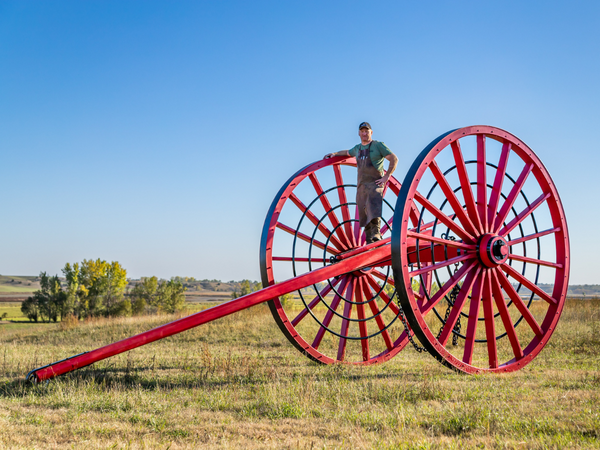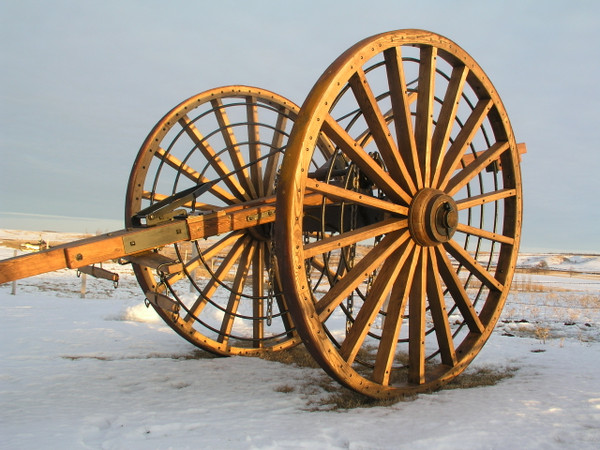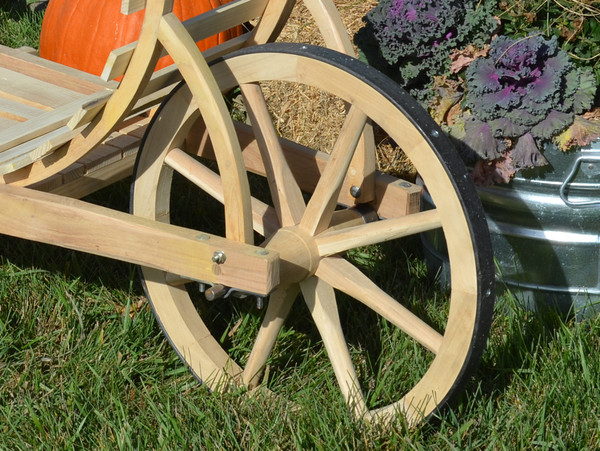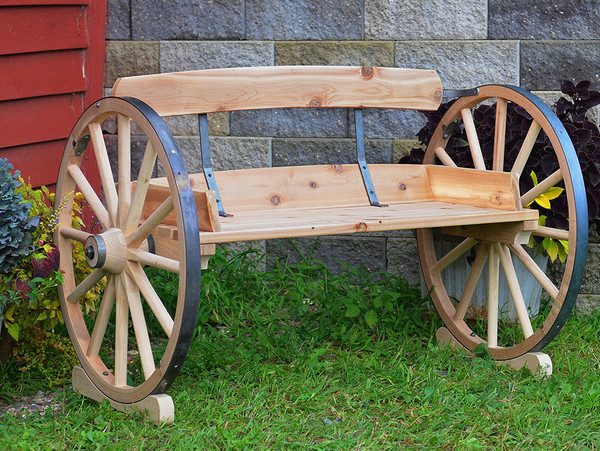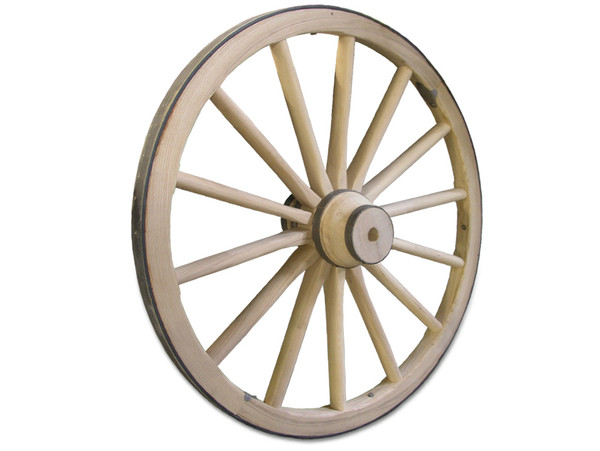With their massive size of nine to twelve-foot diameter and six-inch wide steel tires, these wheels were designed to efficiently haul heavy logs out of the forest.
Logging wheels enabled loggers to continue harvesting timber in the snowless season by providing an alternative to sled transportation or skidding logs out in frozen rivers.
The development of these wheels in 1875 was attributed to Michigan wheelwright Silas Overpack. The large diameter of the wheels allowed for clearance over the logs and rolled more easily over the rough terrain.
The Wheels were placed to straddle the log, just ahead of center. Pointing the pole upward brought the bolster behind the axle down, to be chained to the log. Pulling down the pole would lift the front end of the log off the ground, allowing it to be skidded out of the forest.
Q&A
Question: How do you ship this vehicle to me?
Answer: We coordinate shipments of large freight items - such as our wagons, carriages, and coaches - within a network of private carriers so that your freight is safely transported to your destination without transfer. These are usually coordinated as partial loads in order to save costs, so it can take anywhere between 2 days to 2 weeks to find a ride. They will be transported in enclosed vans that vary from "U-Haul" size box vans to full 53' semi trailers. Contact us for more information and freight quotes.
Question: How do I offload this vehicle at delivery?
Answer: If you have a delivery location with a loading dock available this is your best option. However, we can also deliver to any location that a semi-trailer can access. We then recommend coordination with a towing service to use a tilt-bed wrecker truck. The vehicle can be rolled off the trailer on to the bed of the wrecker truck and it will be tilted/lowered down to the ground from there.

